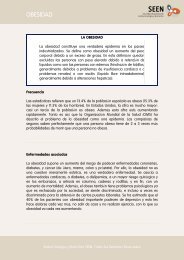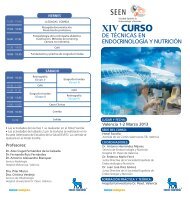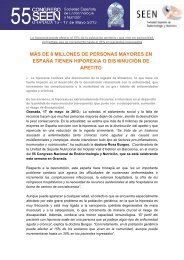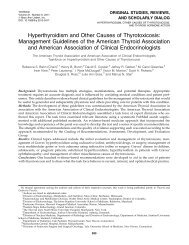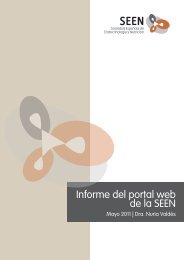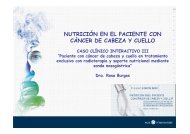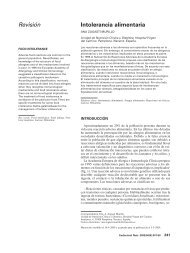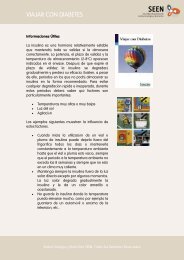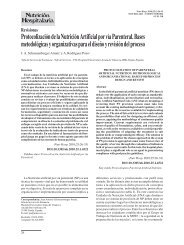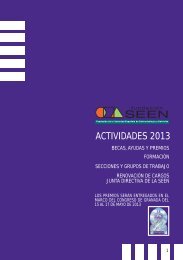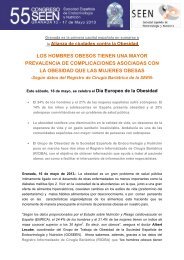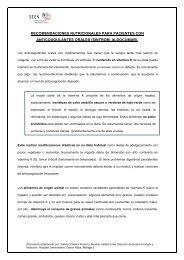Basic Concepts of Fluid and Electrolyte Therapy
Basic Concepts of Fluid and Electrolyte Therapy
Basic Concepts of Fluid and Electrolyte Therapy
You also want an ePaper? Increase the reach of your titles
YUMPU automatically turns print PDFs into web optimized ePapers that Google loves.
microvascular perfusion, increasing arterio-venous shunting <strong>and</strong><br />
reducing lymphatic drainage, all <strong>of</strong> which facilitate further oedema<br />
formation. <strong>Fluid</strong> accumulation in the lungs also increases the risk <strong>of</strong><br />
pneumonia. Removal <strong>of</strong> excess alveolar fluid is achieved by active<br />
sodium transport <strong>and</strong> the gradient between the hydrostatic <strong>and</strong> colloid<br />
osmotic pressures. Active sodium transport is affected by fluid<br />
administration <strong>and</strong> by the release <strong>of</strong> proinflammatory cytokines, both<br />
<strong>of</strong> which occur perioperatively. Acidosis impairs cardiac contractility,<br />
reduces responsiveness to inotropes, decreases renal perfusion <strong>and</strong><br />
can be lethal in combination with hypothermia <strong>and</strong> coagulopathy.<br />
Hyperchloraemic acidosis, as a result <strong>of</strong> saline infusions has been<br />
shown to reduce gastric blood flow <strong>and</strong> decrease gastric intramucosal<br />
pH in elderly surgical patients, <strong>and</strong> both respiratory <strong>and</strong> metabolic<br />
acidosis have been associated with impaired gastric motility. Just as<br />
fluid overload causes peripheral oedema, it may also cause splanchnic<br />
oedema resulting in increased abdominal pressure, ascites <strong>and</strong> even<br />
the abdominal compartment syndrome. Consequently, this may lead<br />
to a decrease in mesenteric blood flow <strong>and</strong> a further exacerbation <strong>of</strong><br />
the process, leading to ileus, delayed recovery <strong>of</strong> gastrointestinal<br />
function, increased gut permeability, intestinal failure <strong>and</strong> even anastomotic<br />
dehiscence. <strong>Fluid</strong> excess may also impair postoperative<br />
mobility <strong>and</strong> increase the risk <strong>of</strong> deep vein thrombosis, nausea, vomiting,<br />
abdominal pain, hyperventilation, headaches, thirst, confusion<br />
<strong>and</strong> diplopia. The literature suggests that, for most purposes, a balanced<br />
electrolyte solution is superior to 0.9% saline <strong>and</strong> a comprehensive<br />
review <strong>of</strong> the use <strong>of</strong> 0.9% saline for resuscitation has recommended<br />
that its routine use in massive fluid resuscitation should be<br />
discouraged.<br />
On the other h<strong>and</strong>, true fluid restriction resulting in underhydration<br />
can be equally detrimental by causing decreased venous return <strong>and</strong><br />
cardiac output, diminished tissue perfusion <strong>and</strong> oxygen delivery,<br />
increased blood viscosity, decreased saliva production with a predis-<br />
119




